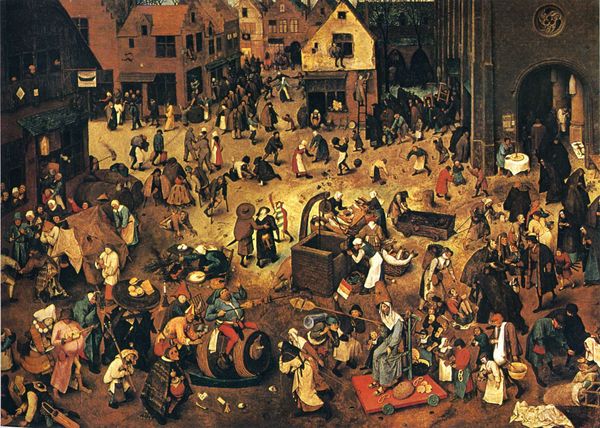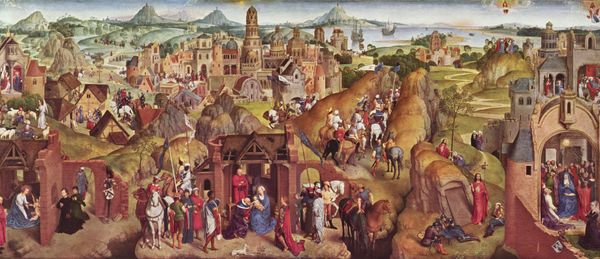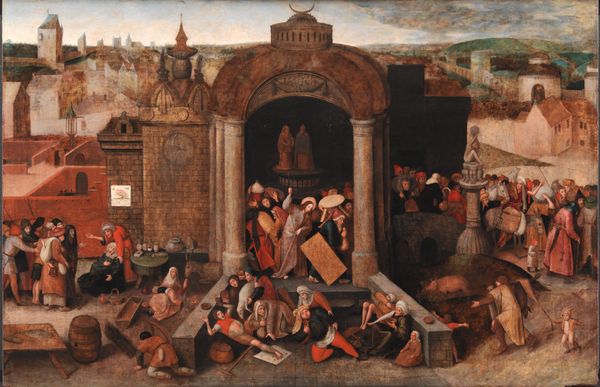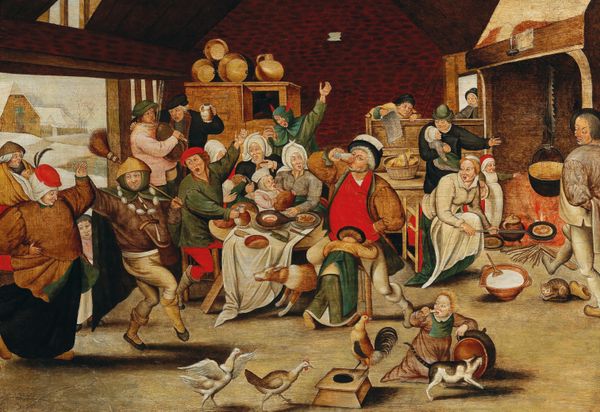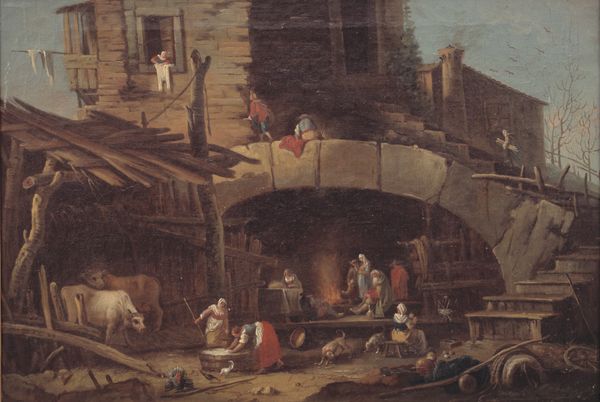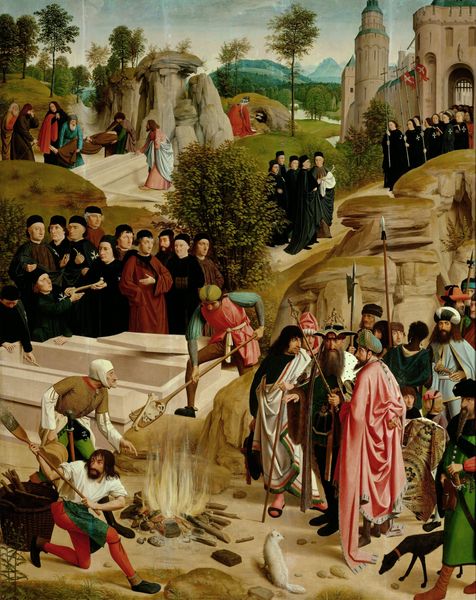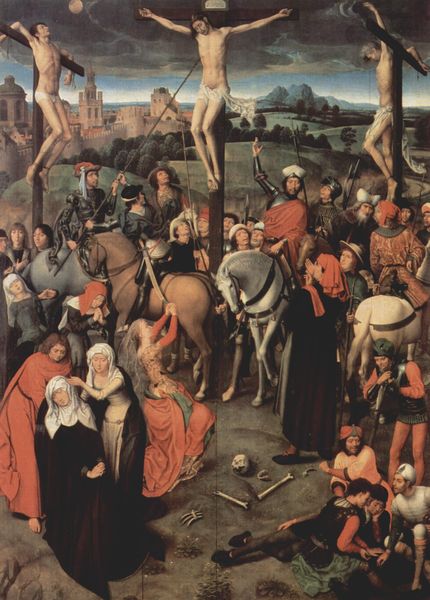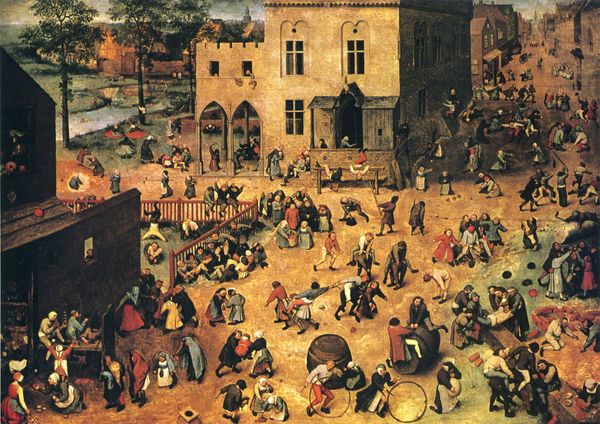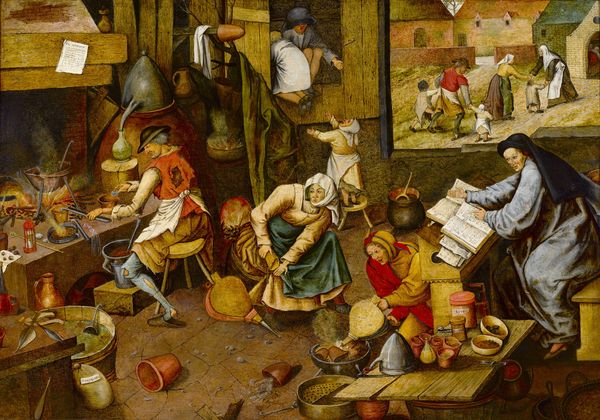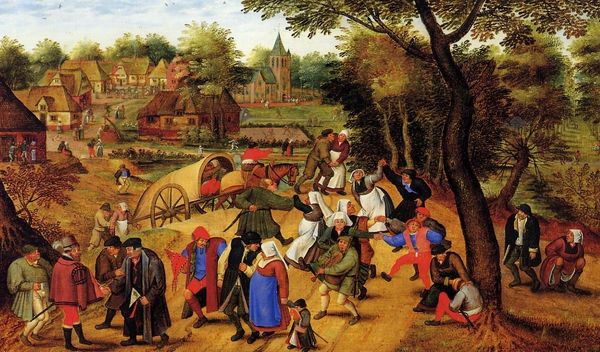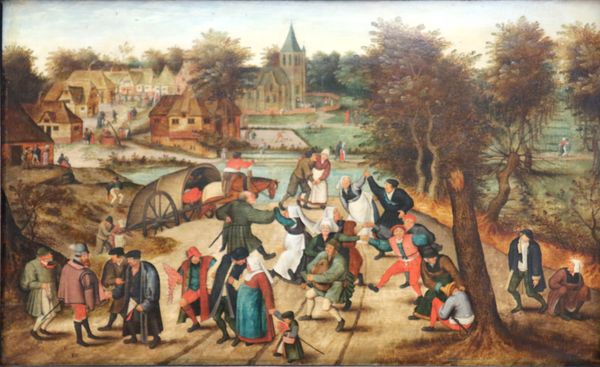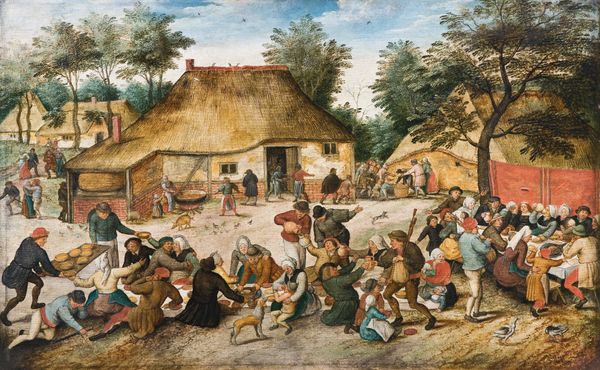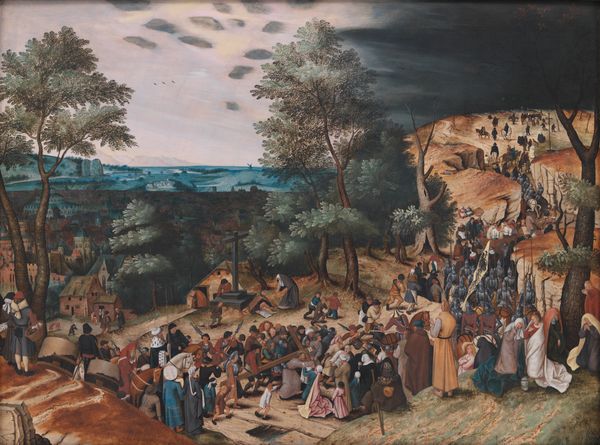
painting, oil-paint
#
allegories
#
allegory
#
narrative-art
#
painting
#
oil-paint
#
landscape
#
figuration
#
11_renaissance
#
oil painting
#
genre-painting
#
northern-renaissance
#
academic-art
Dimensions: 117 x 163 cm
Copyright: Public domain
Editor: This is "Netherlandish Proverbs," painted by Pieter Bruegel the Elder in 1559, rendered in oil. It depicts a chaotic scene packed with people acting out strange scenarios. It has a somewhat carnivalesque atmosphere, slightly disturbing... What is your read on this work? Curator: Carnivalesque is a great descriptor! It feels like a visual encyclopedia of folly. Think about the socio-political climate of the Netherlands at the time. Bruegel wasn’t just painting a scene; he was dissecting a culture grappling with upheaval, caught between tradition and change, Catholic rule and the burgeoning Reformation. Each of these little scenes visualizes an adage – but what do these proverbs *do*? How might they critique societal power structures? Editor: So, you're saying it’s a commentary on the moral landscape, using these proverbs almost as a form of social critique? Curator: Precisely. Consider the man "biting into the pillar," symbolizing hypocrisy within the Church. Or the figure "casting roses before swine," signifying wasted efforts when interacting with people that may abuse your good will, or will not listen to what you have to say. Bruegel’s painting becomes a powerful indictment of folly and social injustice. But it also makes me think—whose folly are we laughing at? Does the act of cataloging others’ missteps reinforce societal norms, or challenge them? Editor: That makes a lot of sense. The painting definitely has a more subversive quality when you look at it that way, like it isn’t just listing the problems, it is really taking something from it. So, the act of creating this inventory then has political implications. Curator: Exactly! And the painting is far from a neutral transcription; the use of common everyday language to depict the scene is itself deeply political. What social layers does the use of these imageries reflect? Editor: It's incredible to think about the layers of meaning Bruegel wove into this seemingly simple scene. It makes you wonder what contemporary "proverbs" or visual shorthands we're living out today. Curator: Absolutely, and how those, too, might one day be seen as complex, political acts.
Comments
No comments
Be the first to comment and join the conversation on the ultimate creative platform.
